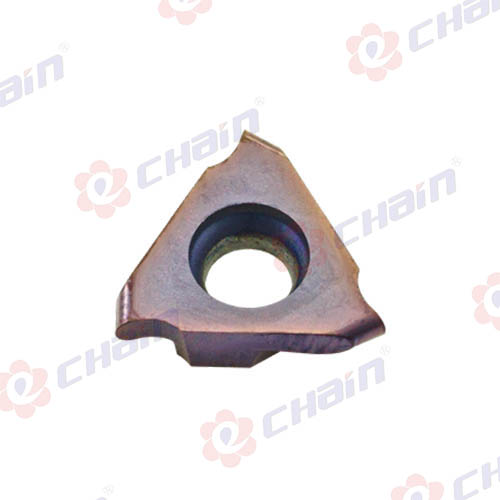Decoding Grooving Tools: Indexable vs. Solid Inserts
2024-03-19
Introduction:
In the realm of metalworking, selecting the right tools can make all the difference in achieving precision and efficiency. When it comes to grooving operations, machinists have two primary options: indexable grooving tools and solid grooving tools. Each type offers distinct advantages and is preferred in different machining scenarios. In this blog, we'll explore the main differences between indexable and solid grooving tools and discuss when each type is preferred, empowering manufacturers to make informed decisions in their metalworking processes.
1. Indexable Grooving Tools:
Indexable grooving tools feature replaceable inserts or cutting edges that can be indexed or rotated to expose fresh cutting surfaces when one becomes dull or worn out. These inserts are typically held in place by screws or clamps and are available in various geometries and cutting materials. Indexable grooving tools offer several advantages:
- Cost-Effective: With replaceable inserts, indexable grooving tools are more cost-effective in the long run as only the inserts need to be replaced, rather than the entire tool.
- Versatility: Different types of inserts can be used with the same tool holder, allowing for versatility in grooving applications without the need for multiple tool setups.
- Easy Maintenance: Replacing worn inserts is a straightforward process, requiring minimal downtime and tool reprogramming.
2. Solid Grooving Tools:
Solid grooving tools consist of a single piece of carbide or high-speed steel with integral cutting edges. Unlike indexable inserts, solid grooving tools cannot be rotated or replaced, and once the cutting edges become dull or worn out, the entire tool must be replaced. Solid grooving tools offer several advantages:
- Rigidity: Solid tools provide superior rigidity and stability compared to indexable tools, resulting in better cutting performance and surface finish quality, especially in heavy-duty machining applications.
- Precision: Solid tools offer consistent cutting performance and dimensional accuracy, making them ideal for applications that require tight tolerances and high precision.
- Specialized Designs: Solid grooving tools are available in a variety of specialized designs, including custom profiles and geometries tailored to specific grooving requirements.
3. Preferred Applications:
The choice between indexable and solid grooving tools depends on various factors, including machining requirements, material properties, and cost considerations.
- Indexable grooving tools are preferred for:
- High-volume production runs where cost-effectiveness and tool life are paramount.
- General-purpose grooving applications with moderate cutting forces and surface finish requirements.
- Operations that require quick tool changes and minimal downtime.
- Solid grooving tools are preferred for:
- High-precision machining operations that demand superior rigidity and dimensional accuracy.
- Heavy-duty machining applications with high cutting forces and challenging materials.
- Specialized grooving tasks that require custom tool designs or non-standard profiles.
Conclusion:
In conclusion, the choice between indexable and solid grooving tools depends on the specific requirements of the machining operation. While indexable tools offer cost-effectiveness, versatility, and easy maintenance, solid tools provide superior rigidity, precision, and specialized designs. By understanding the main differences between indexable and solid grooving tools and considering factors such as machining requirements and material properties, manufacturers can select the most suitable tooling solution to optimize performance, efficiency, and quality in their metalworking processes.



